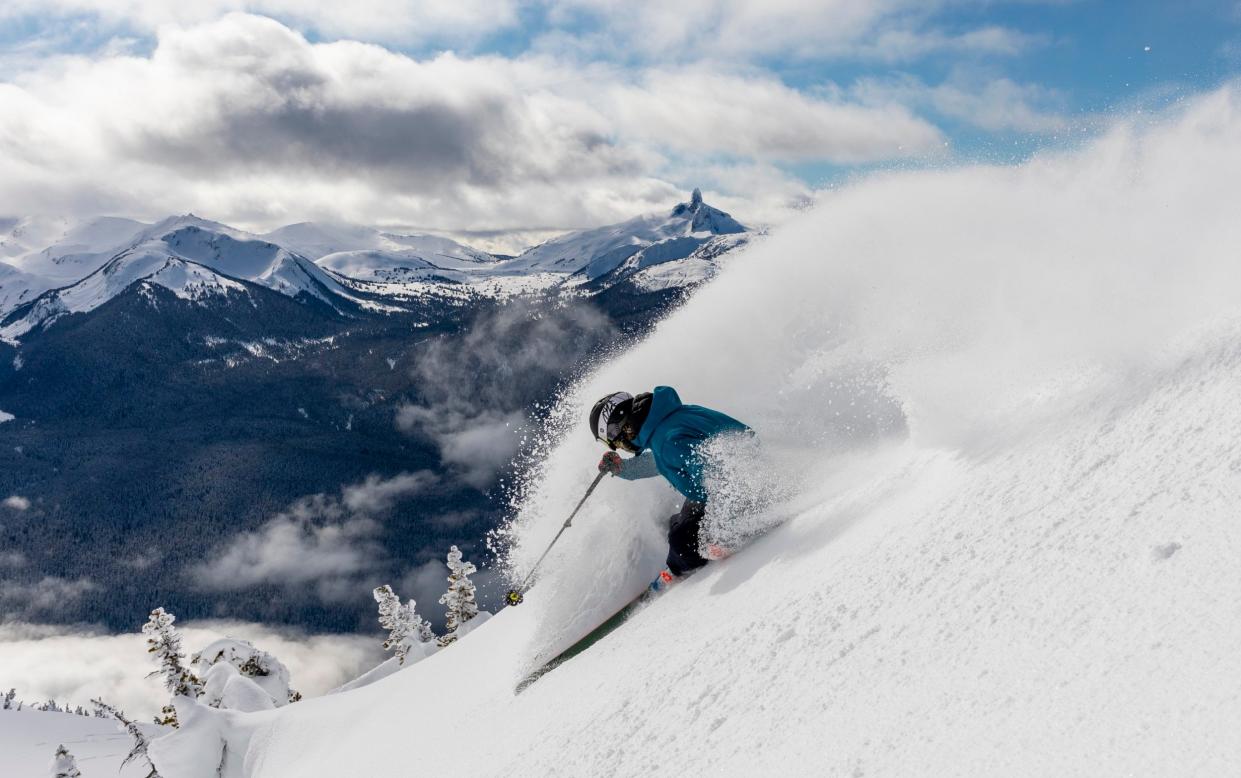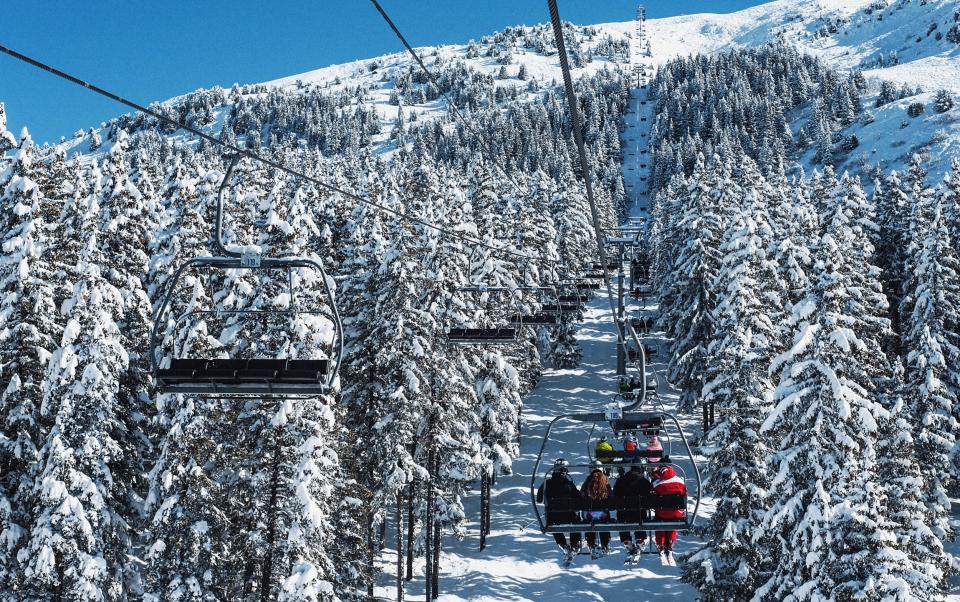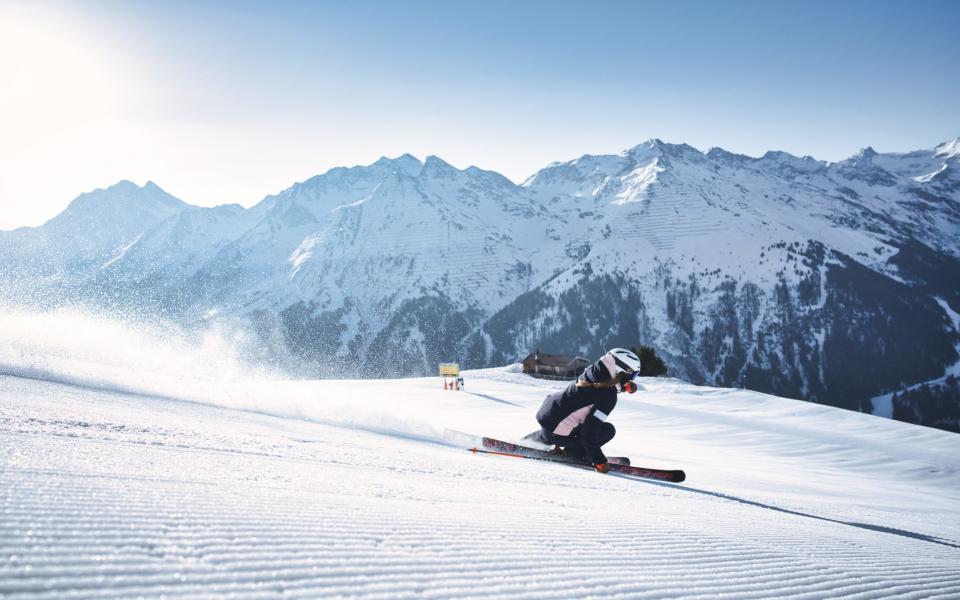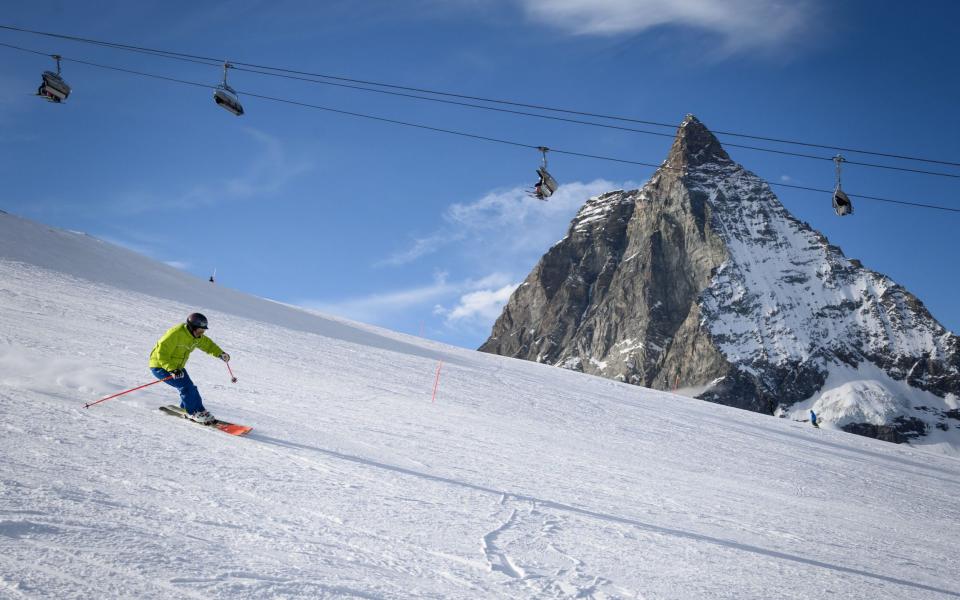In numbers: How snowsure is your favourite ski resort?

We skiers are near-obsessed with snowfall – predicting, comparing, bemoaning it – especially as the ski season swings into action and we look to book our next trip to the slopes. But it’s unpredictable at best, especially in Europe, and “is so much more nuanced than just numbers”. With figures largely unregulated and subject to great artistic licence, “snow depth data is a minefield,” warns weather aficionado Fraser Wilkin from Snow-Wise.
“Take Ischgl – it’s so reliable [for snow] but snow depths are generally quite modest. It doesn’t get a huge amount of snow but what it does get sticks,” he says. “People might look at Ischgl’s stats and think snowfall looks slim, but you can bet your bottom dollar most of the time conditions there are among the best.”
What if then, in our search for snowy serenity, we take into account a ski resort’s altitude and positioning, as well as its snowfall, snow retention and quality – can we combine this with expert knowledge to safeguard, as much as possible, our precious winter breaks?
Yes – that’s where seasoned weather-watchers and skiers like Wilkin come in. “Ask yourself – what kind of skier are you?” he advises. “If you like pounding the pistes, then heading high or to a ski area with solid snowmaking is the way to go… For powder, if you’re going to hedge your bets – risky in Europe – pick a high resort on the north side of the Alps – Engelberg, Andermatt, St Anton.”
And don’t be tempted to misjudge a resort by what you see on social media. The infamous season of 2022/23 was plagued by headlines and videos of rain-washed slopes. Granted, the Christmas temperature spike was less than ideal, but on the whole snowfall levels were normal.
To help you on your way to choosing a snowsure resort this winter, here we analyse some of Europe’s top destinations and their 10-year weather trajectories. Once you’ve found a gem according to its data, use our directory of expert resort guides to plan the perfect break.
Skip ahead to your favourite country:
France
Val d’Isère
Boasting the best April conditions across the board, Alps-side, spring days in Val d’Isère are filled with plenty of late-season snow as well as sun. With two glaciers to contend with – Pisaillas and Grande Motte – plus Val’s expansive sub-alpine terrain, few rival its high-quality snow, come a good year or bad.
Méribel
Highs of over 7m and lows of 50cm in annual snowfall calculations, conditions are variable to say the least in Méribel according to the data. But early season (Dec/Jan) seems the best bet for fresh snow, while its higher-than-average snow depths bode well for the ski-in/ski-out village. Tougnette telecabine or Olympic chairlift are wise starting points for those in search of good snow on the slopes, or head to its highest point Mont Vallon for peak skiing.

Val Thorens
High altitude, sound snowmaking, decent snow cover – you generally know what you’re getting when you ski Val Thorens. Snowfall totals haven’t declined over the years, and most visitors don’t go for the off-piste, of which there’s plenty, so you’ll go unrivalled if that’s your thing.
La Plagne
It’s temperature that affects high-altitude La Plagne most, with the rain-snow level climbing year on year; “but above 2,000m the effects of global warming are less sensitive,” says 35-year ski patroller Claude Schneider who’s seen it firsthand. “While snowfall totals over the winters aren’t decreasing, temperature anomalies are becoming more frequent.”
Avoriaz
Big season snowfalls and snow depths put Avoriaz at the top of the Portes du Soleil leaderboard, with its snowiest week falling at the start of March. Sun and snow days come in equal measure during peak winter, but plenty of lower pistes cater for low-vis days while skiing up to 2,466m is Avoriaz at its best.
Austria
St Anton
Here’s a resort that the statistics don’t do justice; one of Europe’s best choices for powder seekers. January is a veritable snow fest – cold with high precipitation – and season averages sit well above the rest. South-facing slopes affect snow quality, but there are always goods to scout out across one of the snowiest regions in Austria.
Obergurgl
December to April rarely sees weekly snowfall drop below 30cm at Obergurgl, thanks to its high altitude and north/north-west facing aspect – that also leaves it open to bad weather and cold temperatures to boot. Good for early and late-season skiing.

Kitzbühel
Snow-making is strong, to cover what can be patchy pistes early and late season in Kitzbühel, which has relatively low altitude slopes and annual snowfall totals (compared to its Tirolean counterparts here). Kitzbuhel’s tree-lined runs shine through when the weather doesn’t, aiding visibility and offering protection from the elements.
Switzerland
Verbier
The all-time standout season of 2012/13 (over 10m of snowfall) preceded by an all-time low winter (3.3m) was a trend seen in the late 70s in Verbier (and again in the 90s), while the noughties marked a decade of better-than-average snow years. What to take from it? That weather fluctuates in the high-altitude resort, but snow totals and base depths are generally well above average. Locals love the north-facing tree terrain at Bruson when the weather is bad.
Zermatt
According to the data, the best skiing in Zermatt is in February, when the base has built up and its characteristic steep and rocky terrain has the best cover. But with the highest lift-served terrain in Europe and cold temperatures throughout the season, you can bank on decent conditions at any time.

Wengen
The 2017/18 bumper season in Wengen, with 7m totals and 170cm snow depth on higher slopes, was preceded by its worst ever with a grand total of… 1m snowfall. But Wengen’s slopes have staying power thanks to the shade the mighty Monch-Eiger-Jungfrau massif casts over the area (cold, shaded, north-facing). Swings and roundabouts.
Cortina d’Ampezzo
As part of the Dolomiti Superski, Cortina somewhat defies the trends of winter. That is, with some of the world’s best snowmaking systems (6,000 snow guns covering 96 per cent of the ski area) it’s as snowsure as it gets. The snowfall average is low, but the climate is dry – ideal for snowmaking and retention. Piste skiers will find it a haven from December to April, no matter what’s happening on the macro scale.
Cervinia
Italy’s most snowsure resort, with the bonus of glacier access (all summer long), Cervinia scores high on snow cover and quality. It also benefits from Zermatt’s standing – the ski areas are connected – though its westerly stance means sun, especially in the afternoon.
Canada
Whistler Blackcomb
While most resorts see their snowiest week towards the start of February, Whistler, going by the numbers, is deepest at the start of December with an average of five snowy days a week and circa 80cm. But in late spring, skiing and mountain biking overlap, the two mountains taking it in turns to host.
USA
Jackson Hole
Locked in the high-altitude desert of Wyoming, Jackson’s dry, light powder is unrivalled, except perhaps by Japan. During its snowiest week in February it takes half of coastal Whistler’s snow total, which makes sense with water content in mind. The resort is steep, and nothing is off limits, suiting powder-hunting skiers best.

